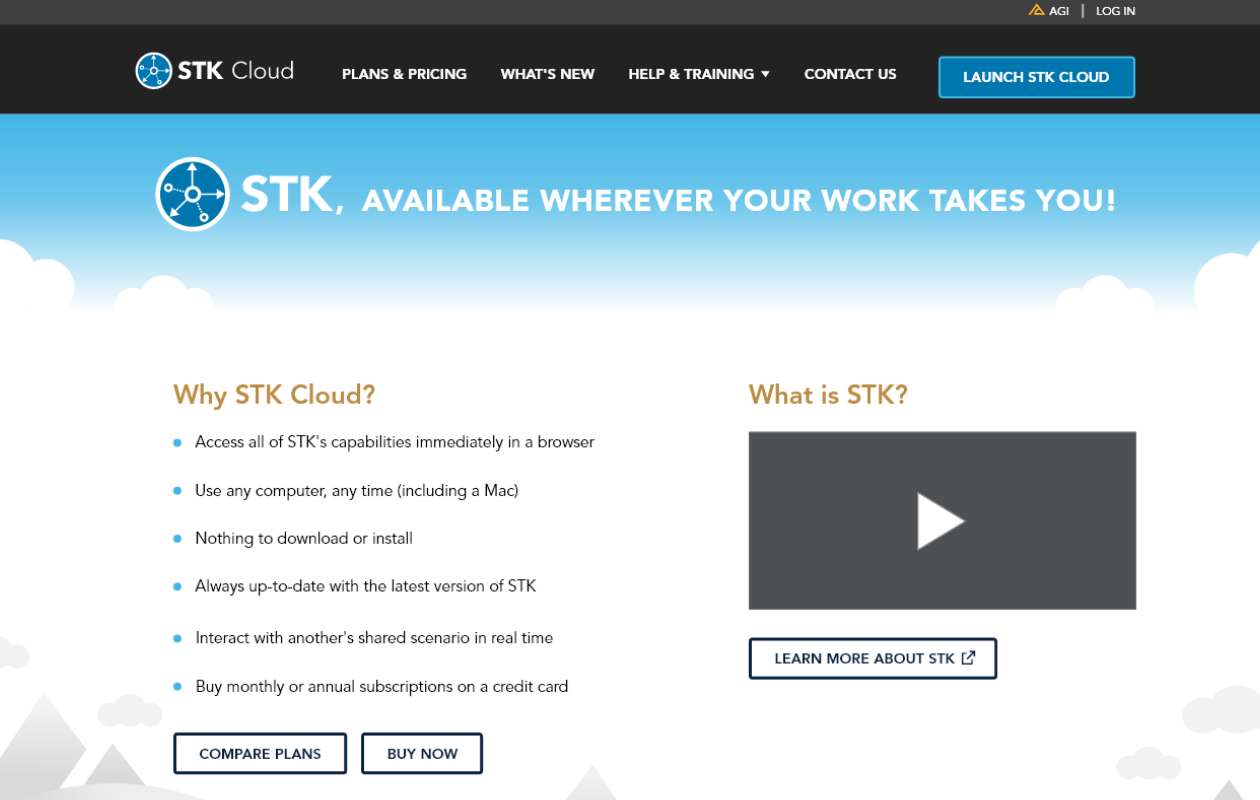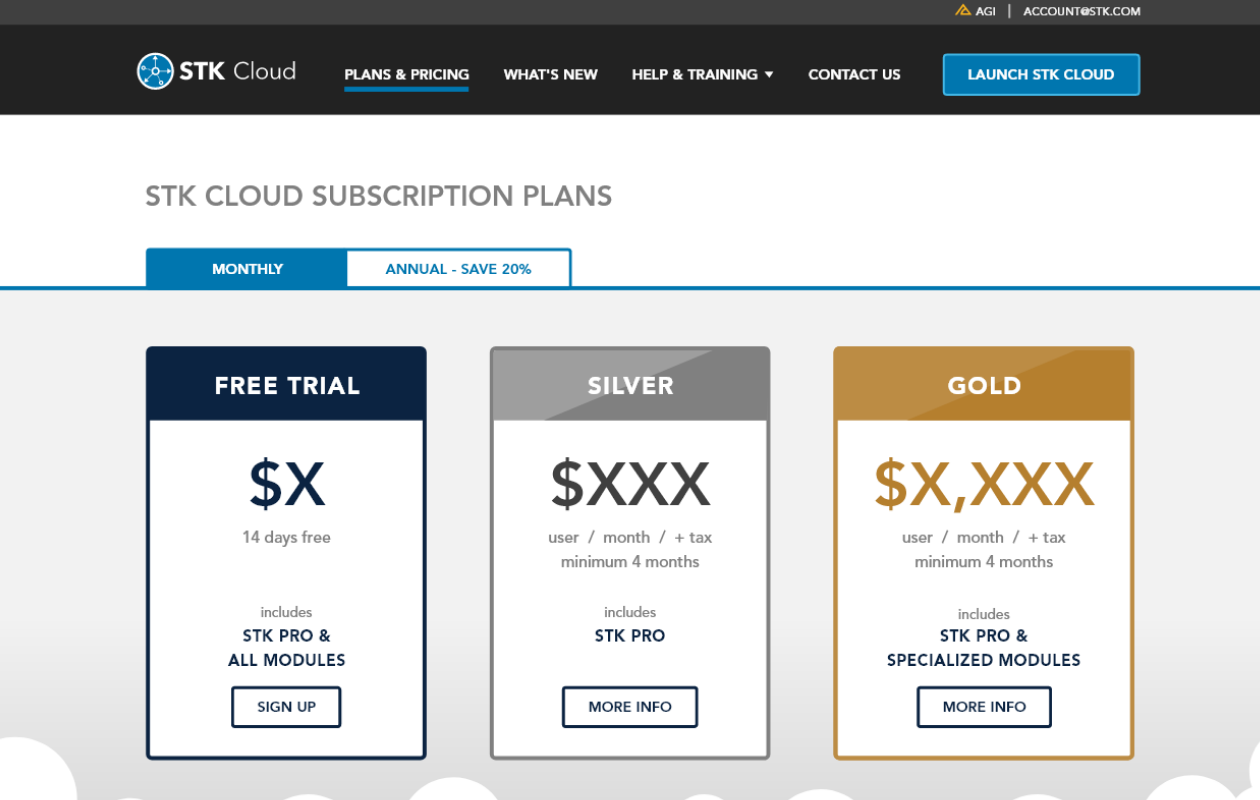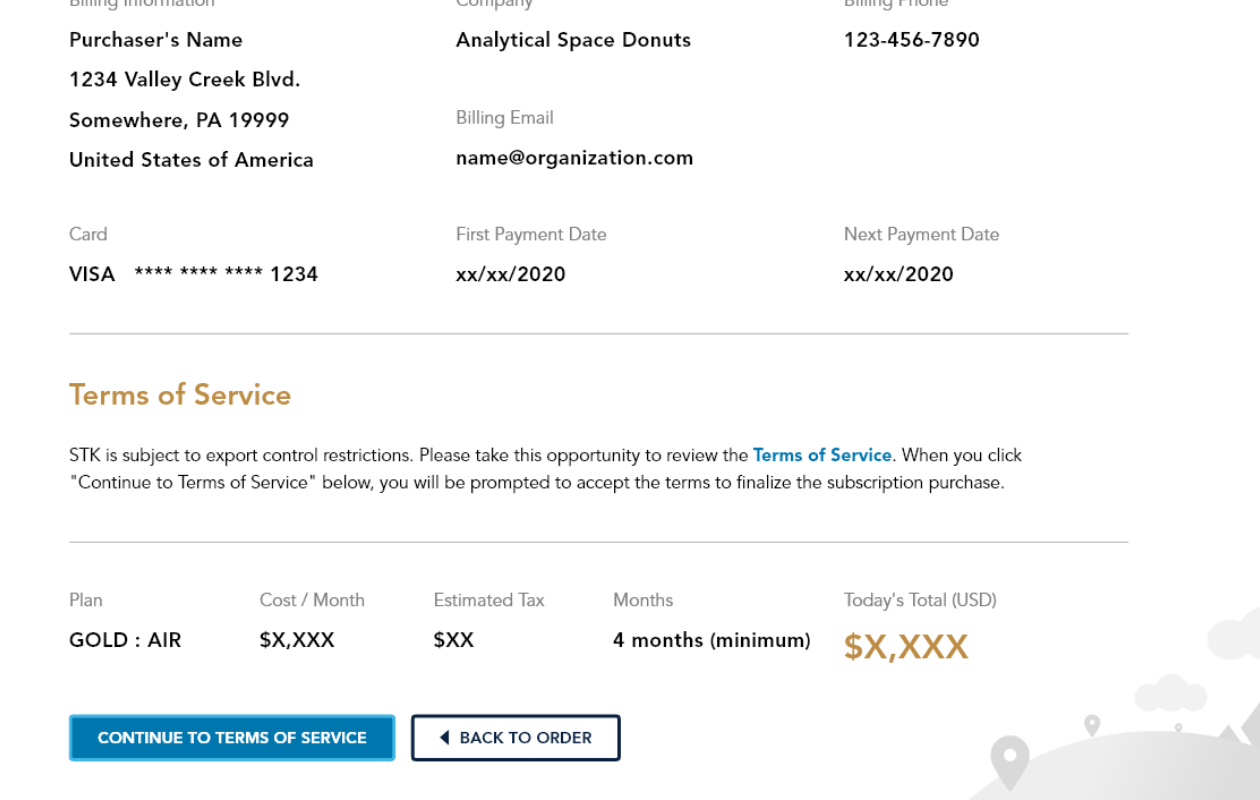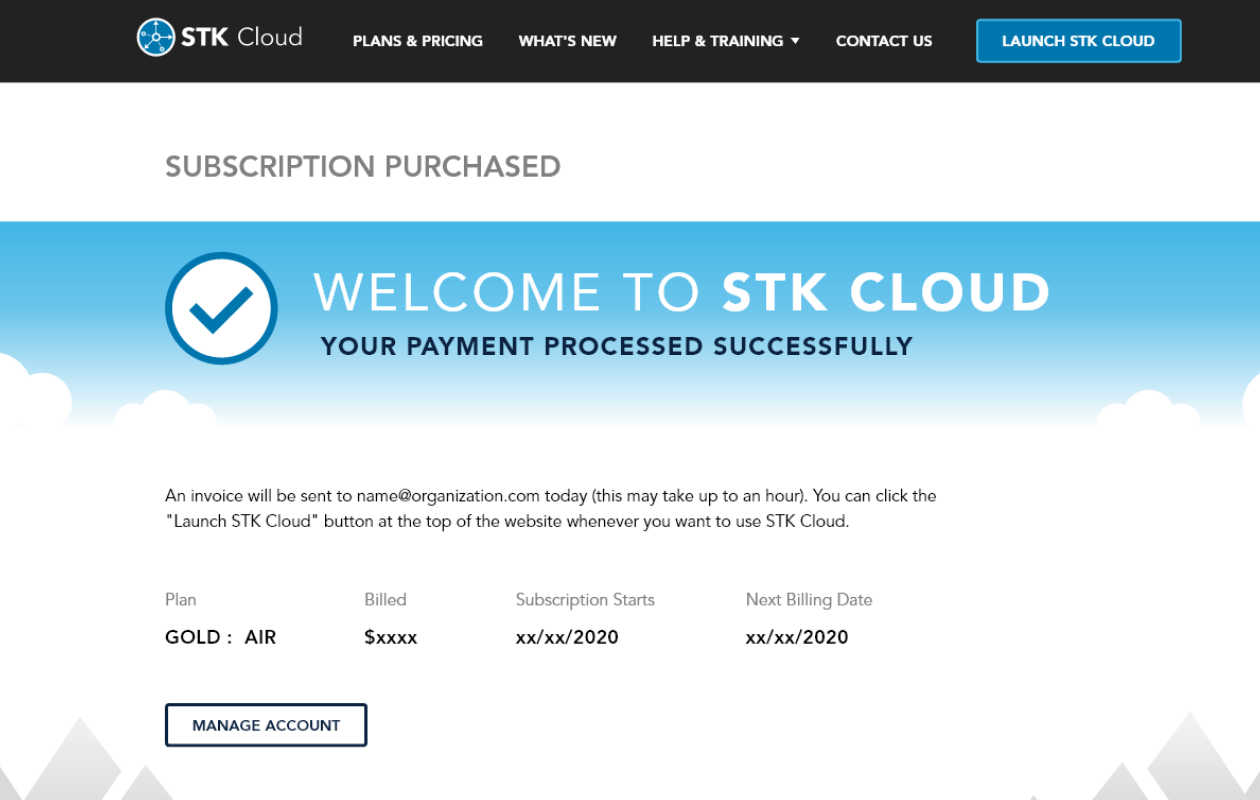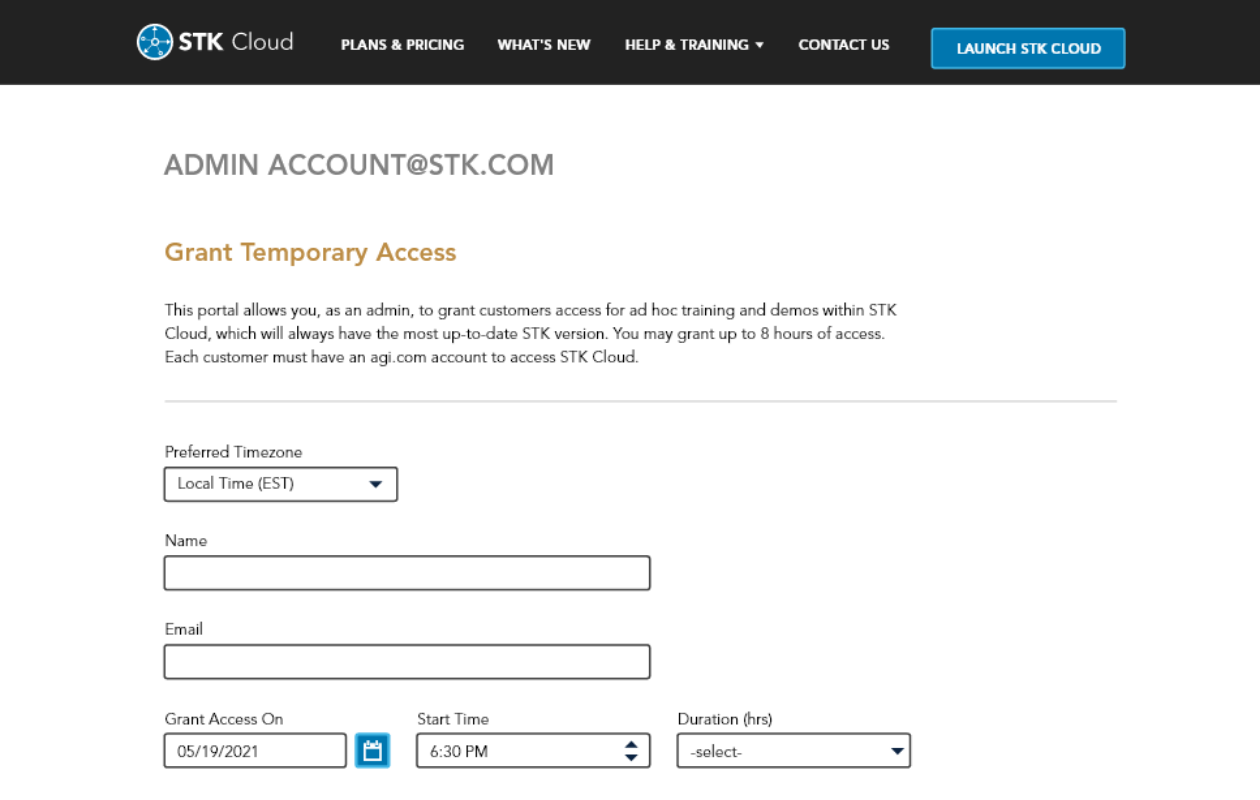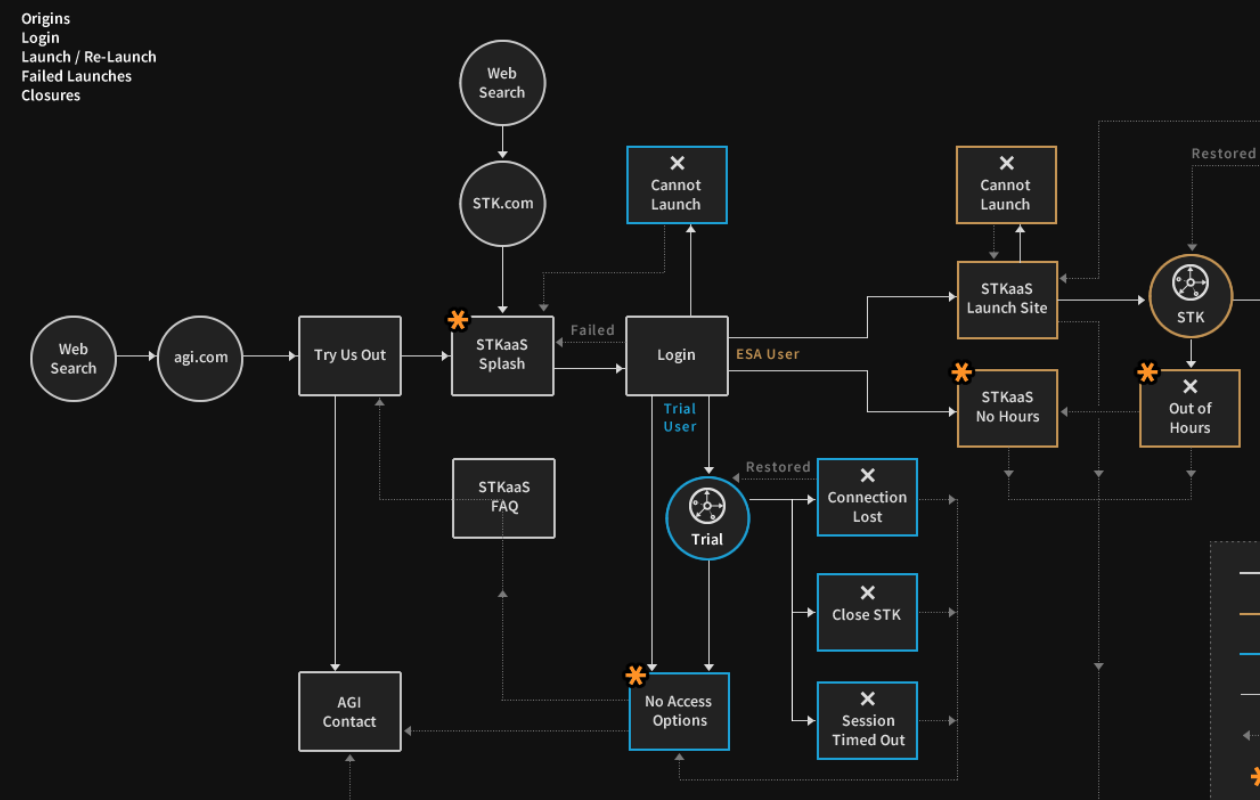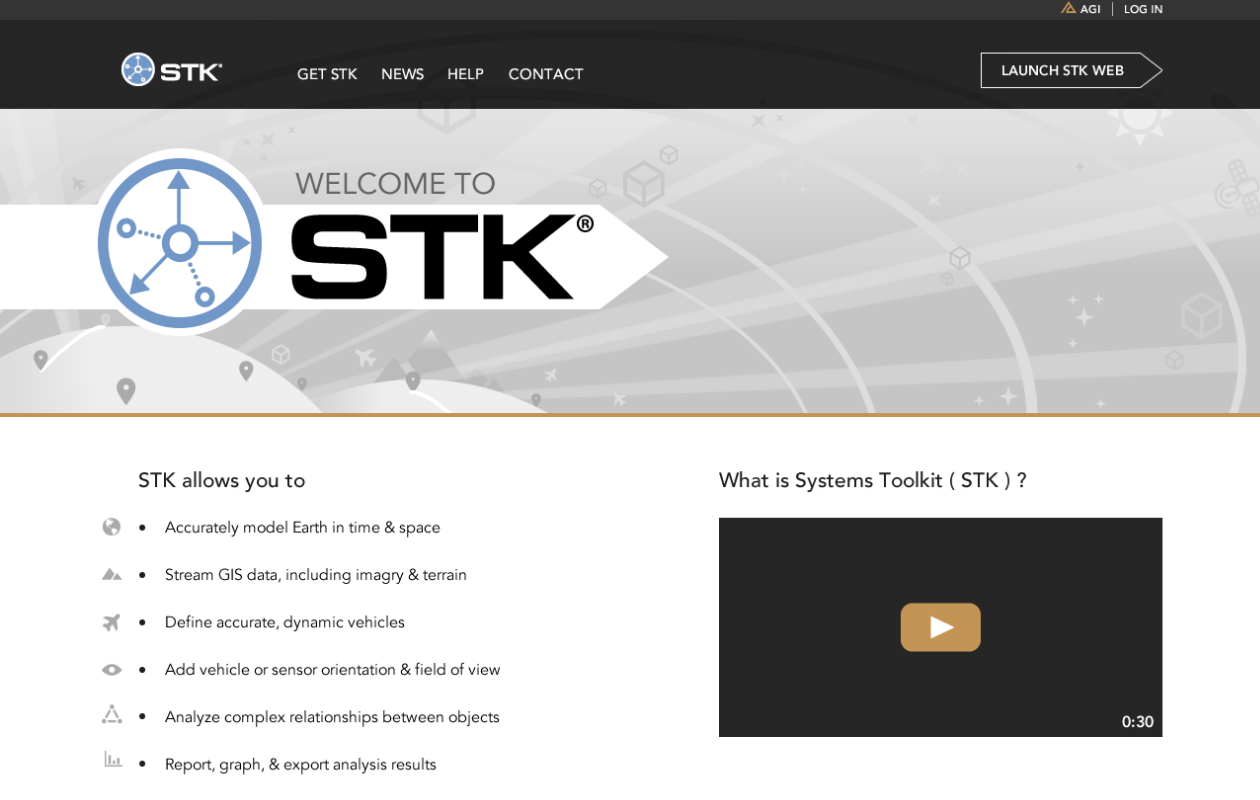STK CLOUD
A browser-based SaaS offering for industry-leading aerospace physics software
The company needed to offer their desktop-based STK (Systems Tool Kit) product, with its myriad optional features, to users who valued the mobility of a browser and the flexibility of a short-term plan.
GALLERY
DETAILS
Requirements
- Create a visual language for the offering's website
- Present information about the offering, assuming visitors know STK
- Compare plans and prices
- Support the trial process
- Support the checkout process, including unhappy paths
- Support training staff who need to provide temporary access for classes
- Provide account details and options
My Involvement
- Role : Sole designer
- Timespan : 3 years
Scale : Net-new website, with all layouts, visual styles, written content, image assets, and iconography
Story
This product took two years of off-and-on design work to become a reality. I was brought on as the sole designer very early, while stakeholders were still debating whether or not to move forward. The company was nearly 30 years old, but this was its first SaaS offering and web-based storefront. The initial requirements were simple, but the scope of the request grew increasingly more complex as the project developed.
The early diagrams I created helped stakeholders to understand the scope of the project as they drafted a release roadmap for the development ahead. With plans solidifying, I researched a variety of SaaS websites and began sketching wireframes for all the pages in the workflow diagram.
With the wireframes confirmed by development and stakeholders, it was time to define the aesthetic styles. At the time, the company's website was undergoing a complete redesign, but the deadline for launch kept moving back. The STK Cloud team moved ahead with a mix of old styles and what little we knew of the new ones to come.
The style system and final drawings took many rounds of refinement to bring product management and development into agreement, especially given tight development resources and limitations within the third-party platform being utilized.
